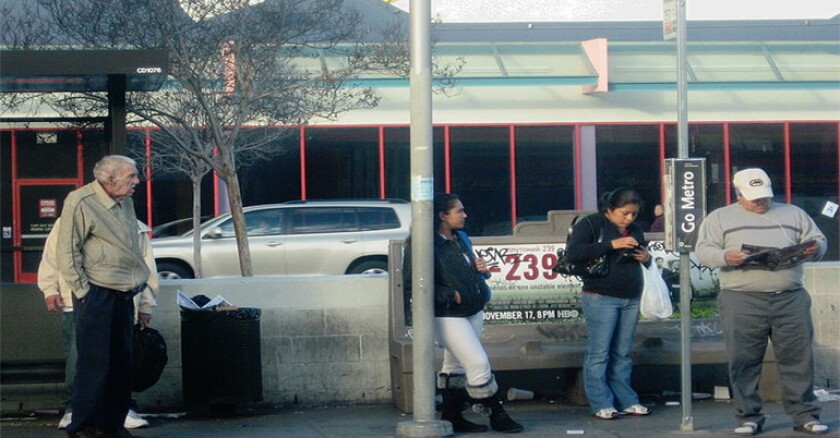Opening the front door of a home or office and having a stop just steps away can seem enormously convenient -- at first.
But when everyone else on the route has the same convenience, commutes can frequently become bogged down by buses stopping and going at almost every intersection.
With that in mind, researchers at George Mason University sought to find out what, exactly, could happen if they hypothetically eliminated some of the stops of a bus system in Fairfax, Va. that serve the university community.
In a paper published earlier this year, they concluded the system could reduce travel times by 23 percent and cut operating costs by about same amount if it scrapped 43 percent of its bus stops. That may seem dramatic, but they say it wouldn't drastically reduce the number of community members served by the system.
Public policy professor Edmund Zolnik, who presented the findings to a national group of transit officials earlier this year, says the slow nature of bus service is part of the reason it's unpopular. While densely-spaced bus stops makes buses more accessible, it also makes trips take longer to complete.
When bus stops are frequent, not only do buses have to stop more often to pick up and drop off passengers, they also use value time accelerating and decelerating. Those two factors alone can take up to 26 percent of total bus travel times. All that stopping and starting can also increase emissions.
Nationally, most bus riders -- about 75 percent to 80 percent of them -- walk less than a quarter mile to bus stops. But Zolnik's study assumed that, in this case, most passengers could walk half a mile to stop, since many of the riders are young, healthy students.
With that, they devised a scenario in which the City-University-Energysaver (CUE) bus system dropped from 121 stops to 68. That still ensured 89 percent of the community had access to the system.
The result was that a one-way trip on the route went from 2 hours and 4 minutes to 1 hour and 36 minutes, a 23 percent drop.
Not only would that make the trip shorter for existing riders, Zolnik says, but such a reduction in travel times would likely encourage more people to use the system since it could be more useful for them. Moreover, the transit system could use the savings to fund things that might encourage transit use, like cheaper fares or upgraded bus shelters.
Zolnik hasn't shared the work to local transit officials but presented it at a national meeting of transit officials in Washington, D.C. earlier this year.
Still eliminating stops is often controversial. Transit systems tend to have "inertia," which can prevent dramatic changes, Zolnik says. Moreover, local leaders likely would face stiff criticism if they proposed such a dramatic elimination of stops.
"They want to do what they can for people, and taking things away isn't on their list of things to do," says Zolnik, who wrote the study with graduate student Ranjay Shrestha.
Moreover, residents would likely bemoan the loss of stops -- even if there's a net benefit to the entire route. "It's in front of someone's door," Zolnik says. "They're going to see their stop is gone instead of looking at the whole system."
Zolnik found that 68 percent of the stops that would hypothetically be cut served shopping areas, which likely wouldn't sit well with some businesses.
Meanwhile, Fairfax county is one of the wealthiest counties in the country, so Zolnik didn't have to think much about the impact of service cuts to low-income residents. In a more diverse area with more low-income riders -- nearby Washington, D.C, for example -- policymakers would have to balance the needs of those residents, since faster trips wouldn't matter if people who need transit the most can't access it.
He also says in some parts of the country with large numbers of elderly residents, eliminating stops may not be a good idea. Older people who are out of the workforce prioritize accessibility of stops to the speed of the trips. But he says that's likely not an issue in the Fairfax example, since he focused on a bus system that largely serves the university.
Still, while Fairfax's demographics are unique, the issues Zolnik outlined are not. "My suspicion," Zolnik says, "is it's not an uncommon problem."









